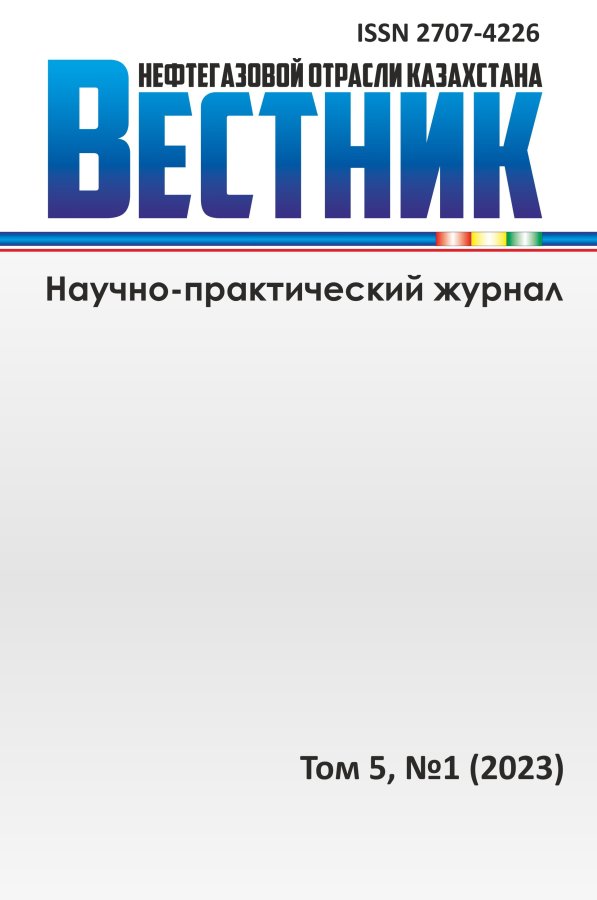The use of software to increase the TBO on the example of the wells of the frequently repaired fund of the "Zhetybaimunaygas" PM
- 作者: Kanbayeva Z.S.1, Seitmaganbetov S.1
-
隶属关系:
- KazNIPImunaygas
- 期: 卷 5, 编号 1 (2023)
- 页面: 74-93
- 栏目: Oil and gas field development and exploitation
- URL: https://bakhtiniada.ru/2707-4226/article/view/134367
- DOI: https://doi.org/10.54859/kjogi108608
- ID: 134367
如何引用文章
全文:
详细
Background: The operation of fields at a late stage of development requires the use of more efficient methods for increasing the TBO of the producing field in order to reduce the high costs of maintenance and repair works of production well stock.
Aim: Analysis of a well operation in a frequently repaired field (FRF), identification of the main causes of failure of downhole pumping equipment (DPE) and a way to solve problems using information technology.
Materials and methods: An important indicator of improving the reliability of the production facilities is the time between overhauls of wells (the TBO). One of the most significant complications during the well operations at the fields is the abrasion of the internal cavity of the tubing by pumping rods (the PR). Abrasion occurs due to mechanical action between the sleeve joint and the body of the rod from the inner wall of the tubing during reciprocating movements.
In order to minimize the contact of the rod with the tubing, a high-quality selection of the rod layout is required with further lowering of the pump rods with a centralizer. The software is an excellent tool for modeling sucker-rod pumping units (SRP), as well as for optimizing layouts of current SRP systems.
Results: According to the well profiles analysis, it is possible to predict failures and the consequences of failures of underground equipment. The efficiency of lowering the layout of underground equipment, calculated in the RodStar software, the number of repairs decreased from 66 to 31 units, and the average operating time increased from 52 to 114 days. It is important to note that failures due to leaky tubing decreased from 25 to 10 units, and the number of parted rods – from 24 to 6 units.
Conclusion: Summing up the analysis of the use of software products for the selection of downhole pumping equipment in the operation of mechanized well stock in oil and gas fields, the relevance and timeliness of creating a corporate database and the use of modern tools should be noted. The effectiveness of the software and the module application are certainly confirmed by the positive results i.e. an increase in TBF and TBO of the production wells of "Zhetybaymunaigaz" PD.
作者简介
Zhanat Kanbayeva
KazNIPImunaygas
编辑信件的主要联系方式.
Email: Kanbayeva_Zh@kaznipi.kz
哈萨克斯坦, Aktau
Sabit Seitmaganbetov
KazNIPImunaygas
Email: seitmaganbetov_s@kaznipi.kz
哈萨克斯坦, Aktau
参考
- Analysis and providing of recommendations, support of pilot testing on the Production Directorate (PD) “Zhetybaymunaigas” fields. Final report. KazNIPImunaygas. Aktau; 2021.
- The pilot testing of RodStar software for selection of makeup of string of pump rods on 10 wells of the "ZhMG" PD frequently repaired fund. Final report. Aktau; 2021.
- Kruman BB. Deep-well pumping rods. Moscow: Nedra. 1977.
- Okrushko EI, Urakseev MA. Defectoscopy of deep-well pumping rods. Moscow: Nedra. 1983.
- GOST 633-80. Tubing pipes and couplings for them. Specifications.
- Casing and tubing. API Specification 5CT, 5B (10th edition).
- GOST 34380-2017 (ISO 10405:2000). Casing and tubing for petroleum and natural gas industries.
- ST RK ISO 11960-2009. Steel pipes for use as casing or tubing for wells in petroleum and natural gas industries.
- Functionality on production method. The module “Selection of downhole pumping equipment”, The support of works on module pilot testing. Development of algorithms for selecting of electric centrifugal pump unit. Final report. Astana; 2021.
- Technology analysis of sucker-rod pumping unit lowering and lifting results. Final report. Astana; 2021.
补充文件
















